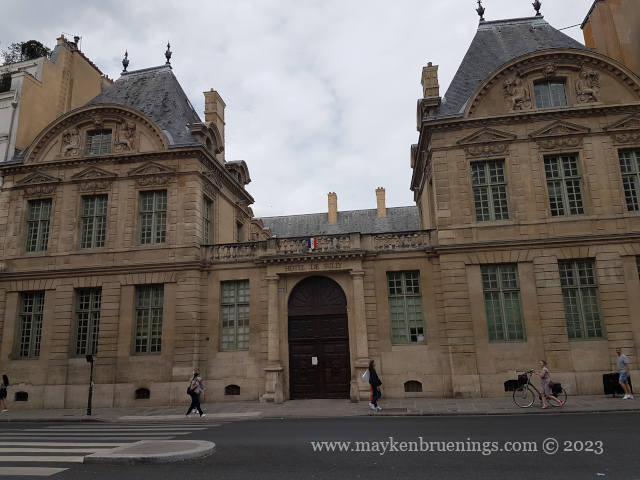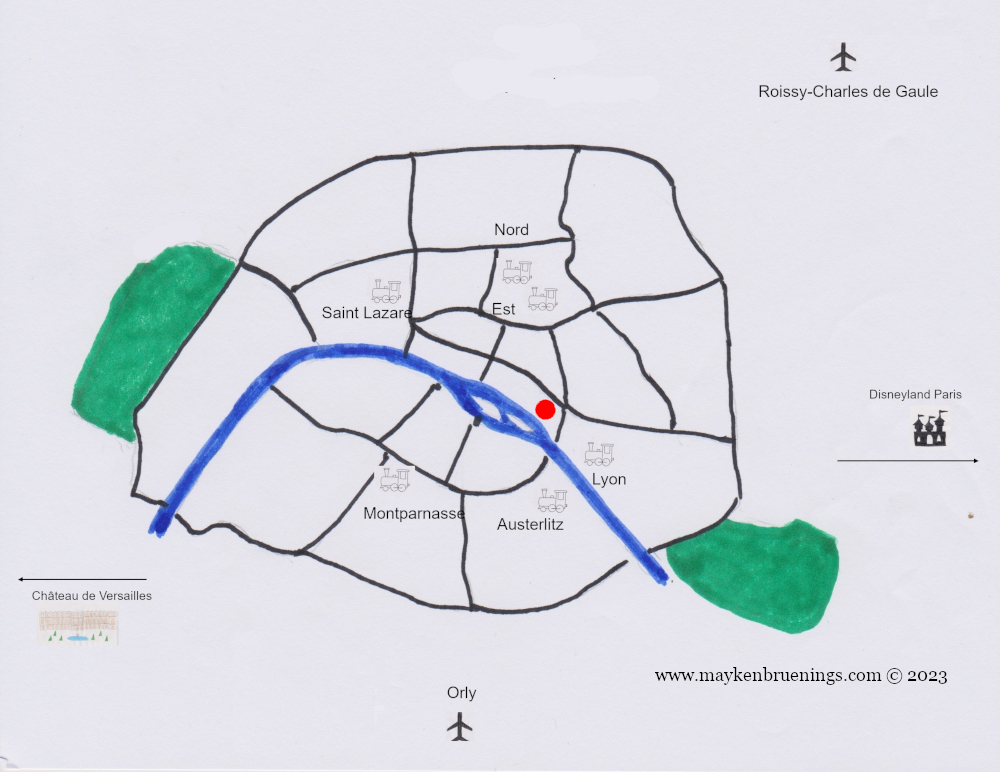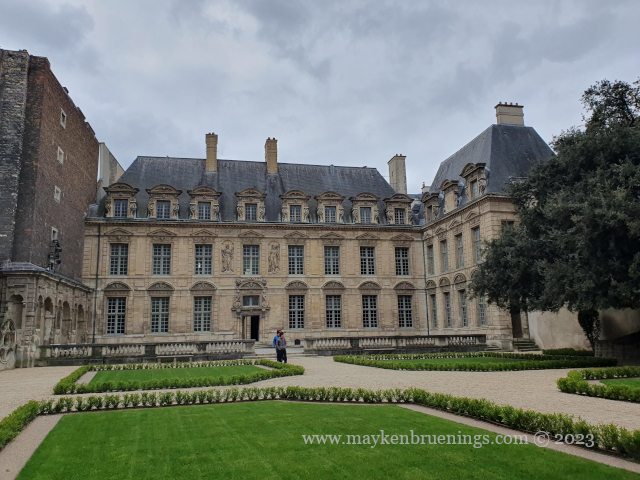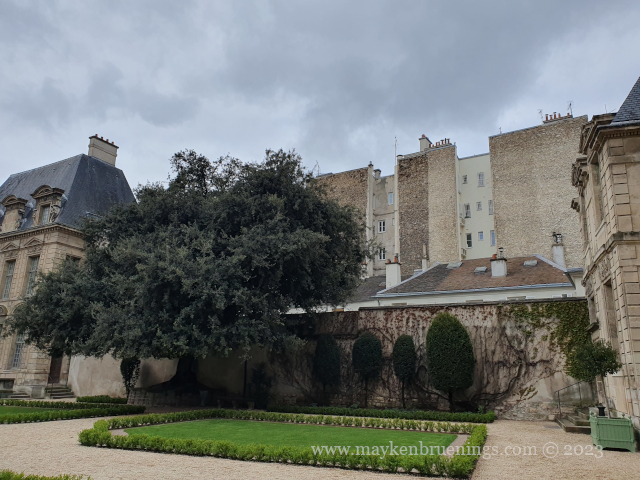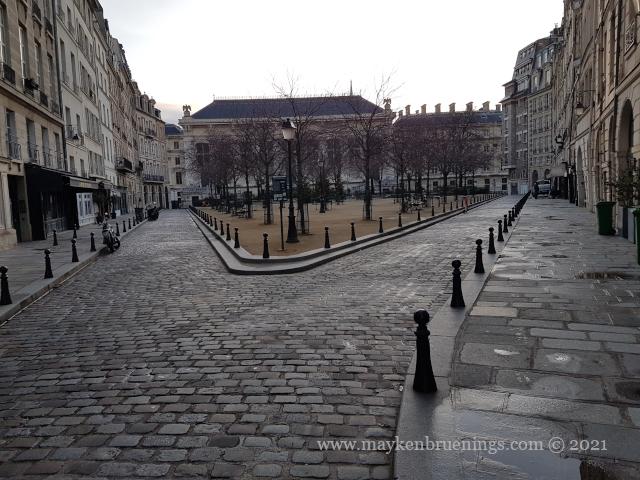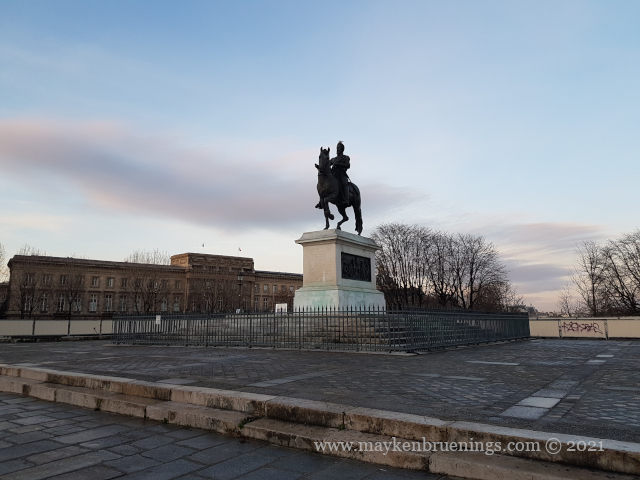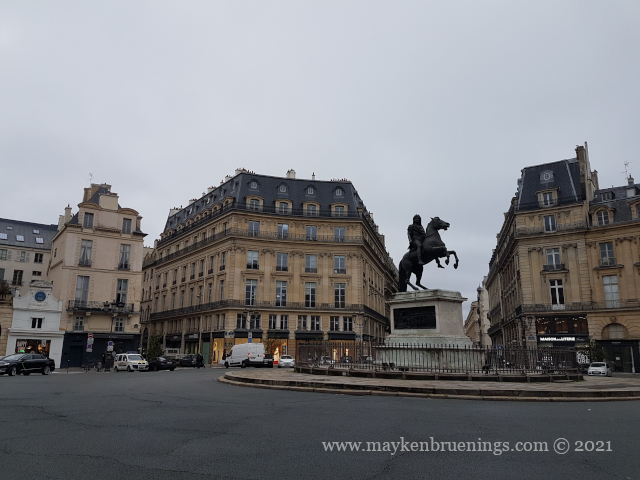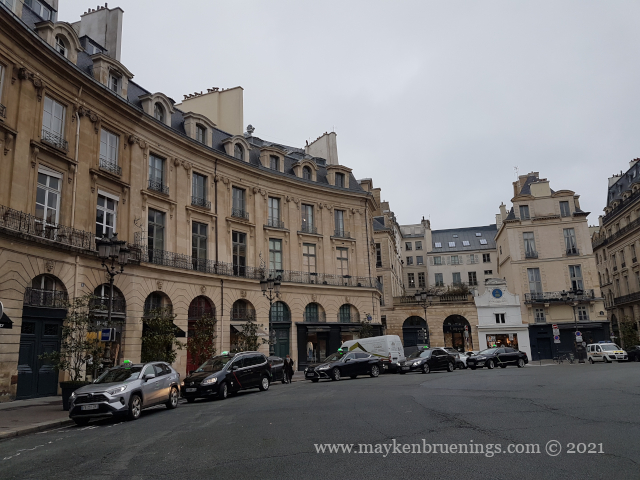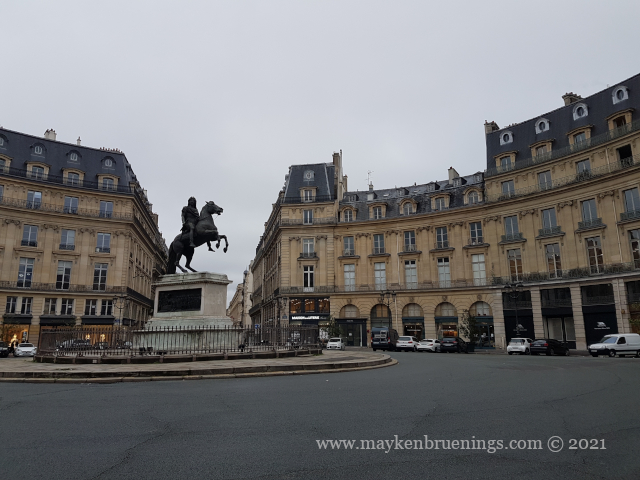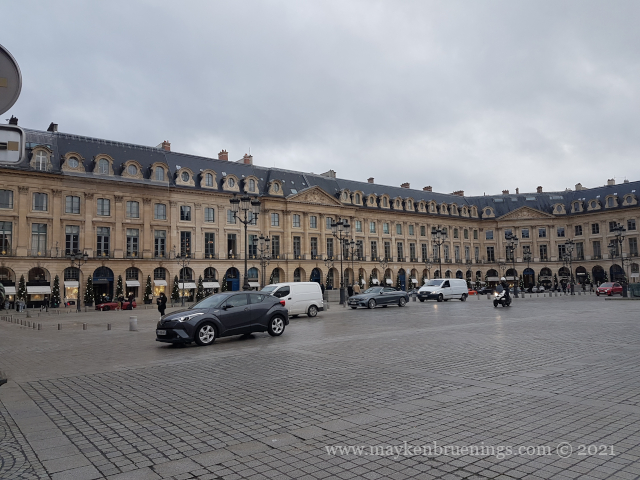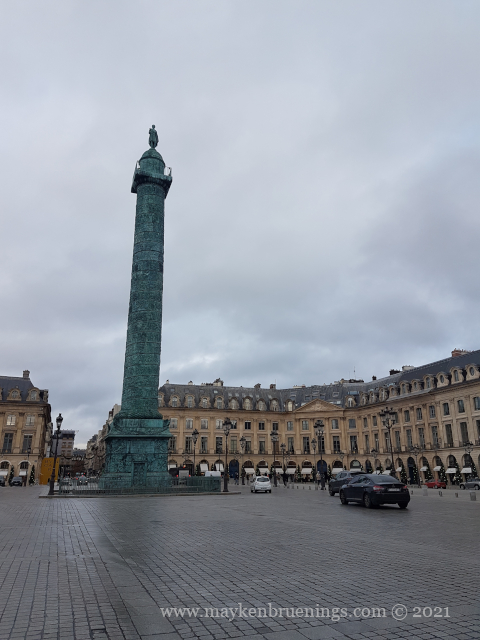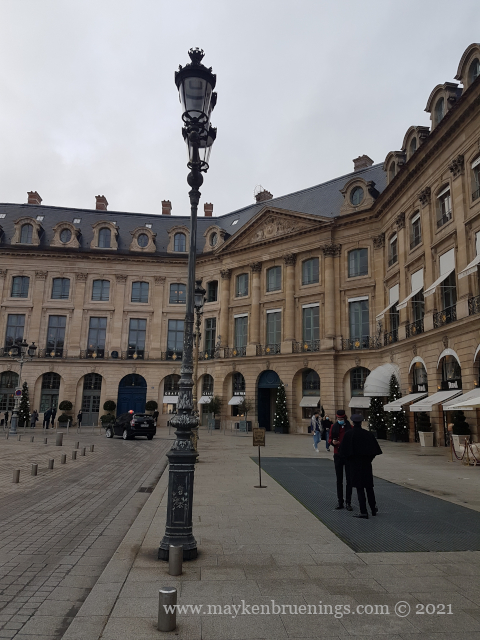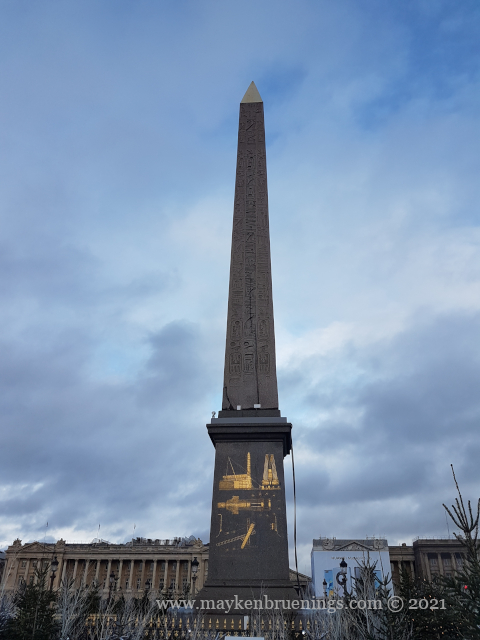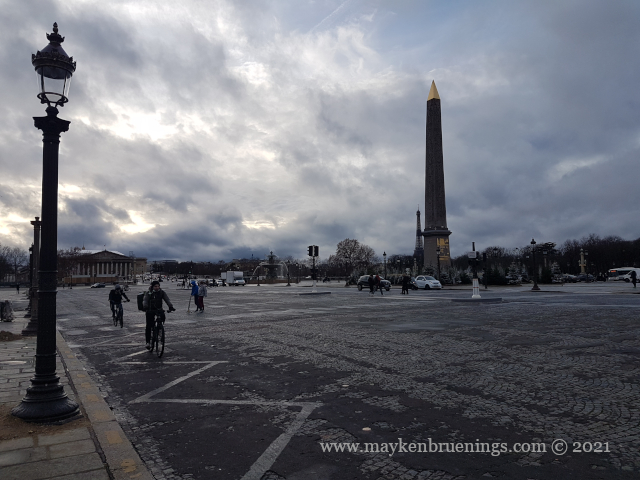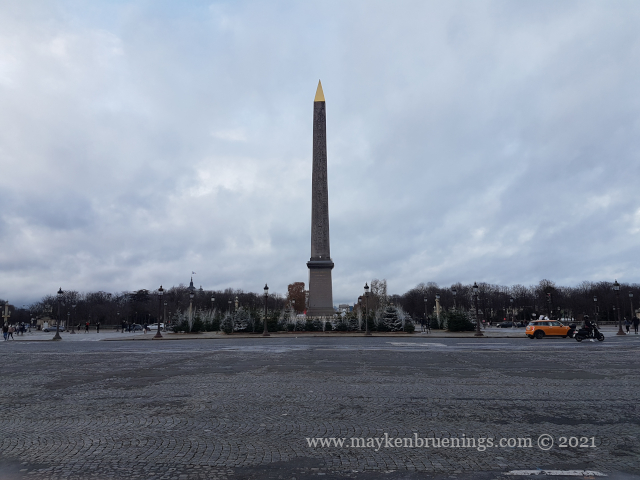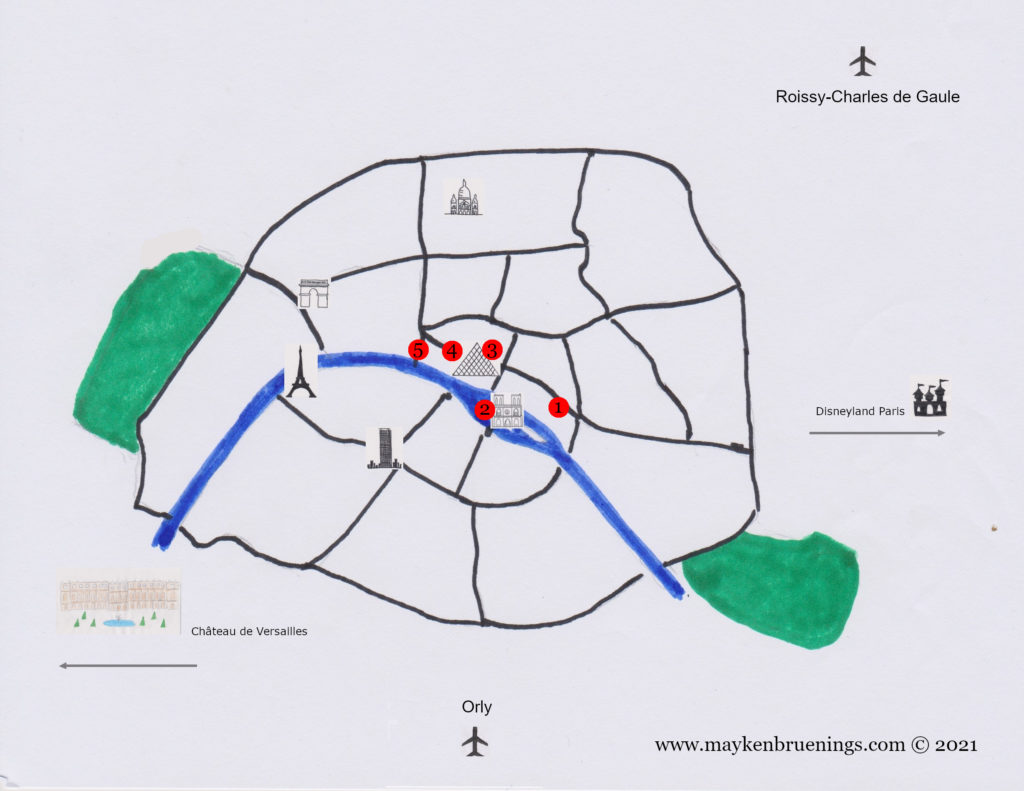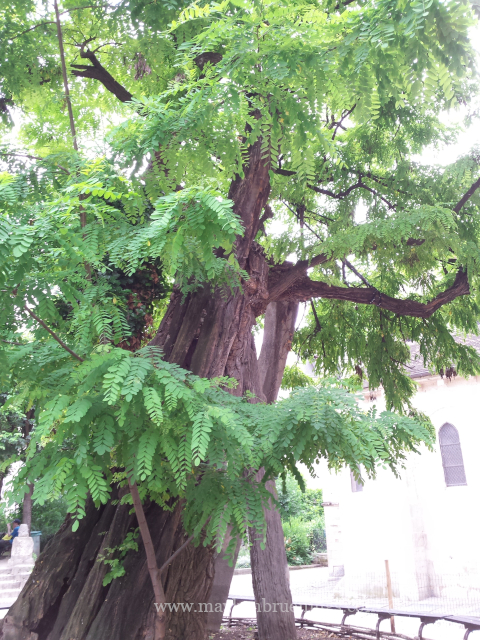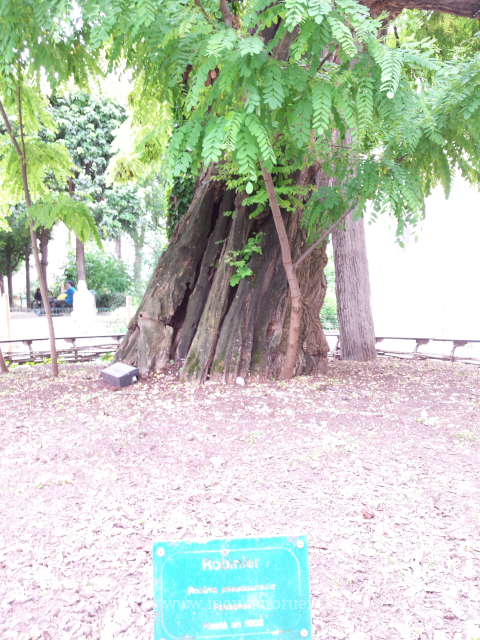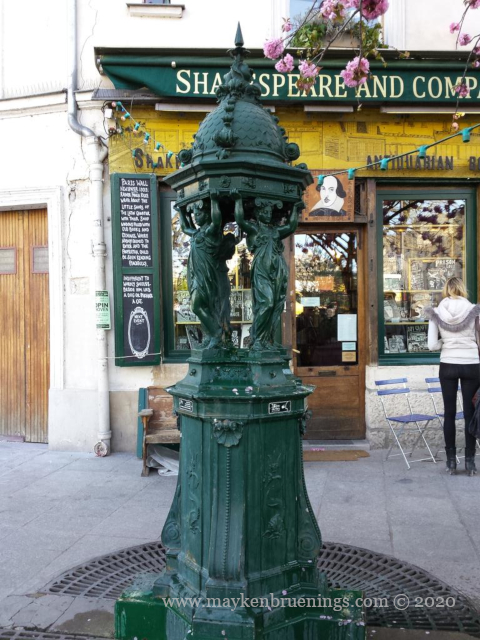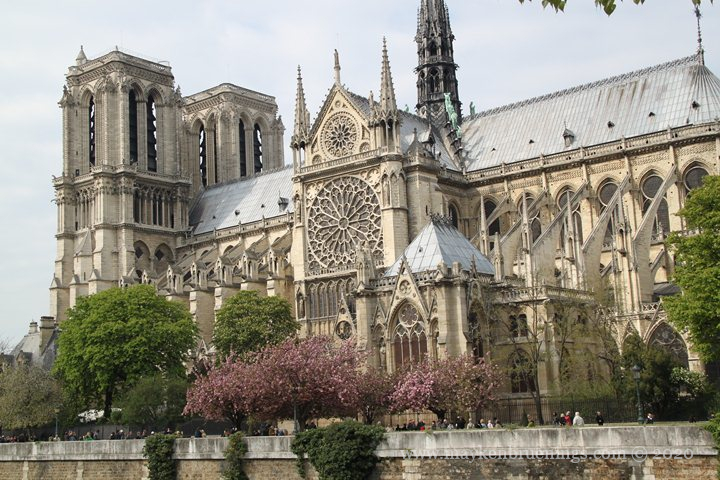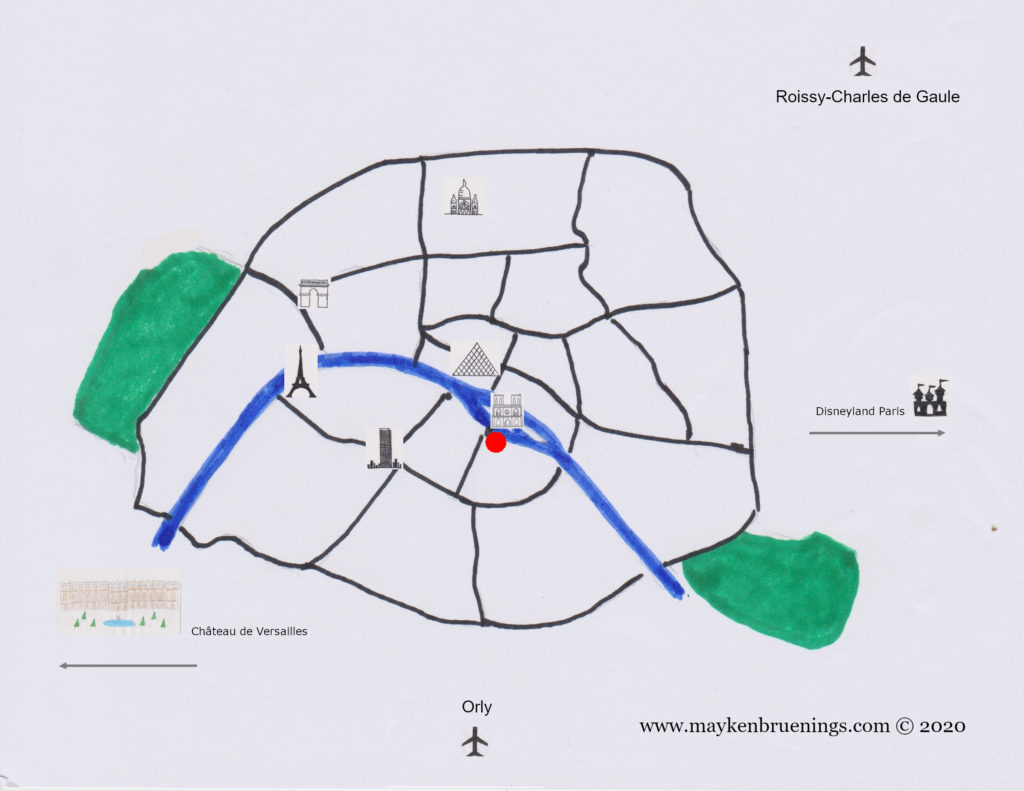The Place des Vosges is one of the five Royal Squares in Paris. Inaugurated in 1612, it was initially named Place Royale after kings Henri IV and Louis XIII. Its name was changed to Place des Vosges in 1792 for the département Vosges in eastern France which was the first to pay its taxes under the French Revolution.
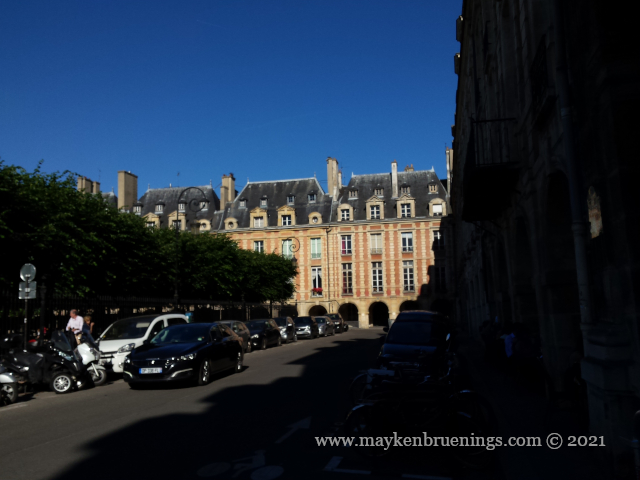
This royal square for once is a square, 140m to each side, with identical façades all along, two stories high, built of red bricks with strips of stone quoins. On the ground level, vaulted arcades allow pedestrians to go around the entire square shielded from the elements.
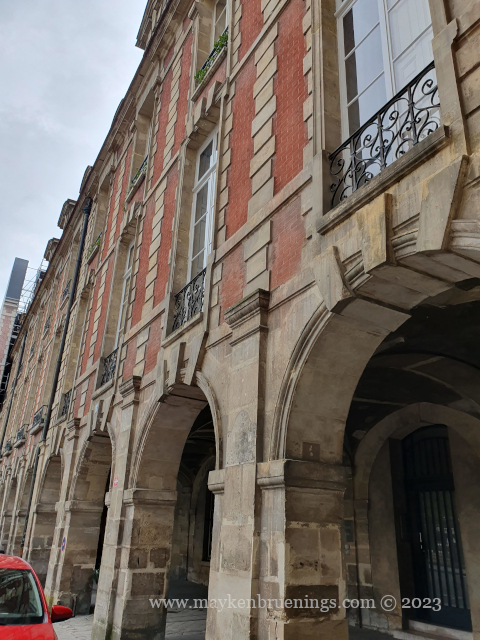
Only at the center of the north and south sides, the pavilions of the Queen and the King rise above the regular roofline. Despite all those names, the only royal who ever lived on the Place des Vosges was Anne of Austria, and even her residence in the Pavillon de la Reine was short-lived.
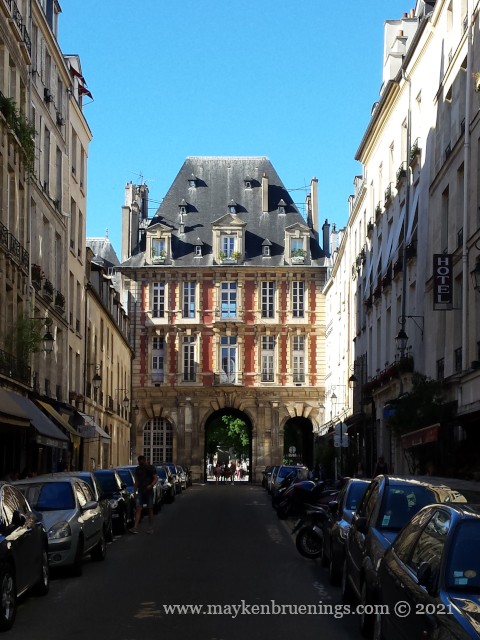
At the center of the square stands the equestrian statue of Louis XIII. The original statue, built in 1639 was destroyed during the revolution.
Up until the revolution, the square served as a meeting place for the nobility. Today, when the weather is fine, it becomes a meeting place for families, friends, students, and kids’ birthday parties.
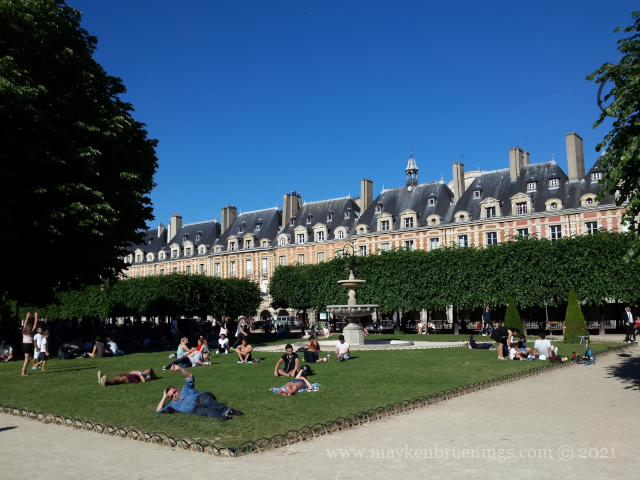
Over time, the square has seen many famous residents come and go. The most well-known is probably Victor Hugo who lived at number 6, house which is now the Victor Hugo museum. Other writers who lived on the square include Colette, Alphonse Daudet and Georges Simenon. It was also home to contemporary French politicians like Jack Lang and Dominique Strauss-Kahn. It is said that even Cardinal Richelieu lived at number 21 for a while.
The numbering begins at the rue de Birague at the south side of the square with the Pavillon du Roi being number 1. From there, it’s rising even numbers to the right-hand side and rising uneven numbers to the left-hand side, making the Place des Vosges an exception to the systematic street numbering in Paris.
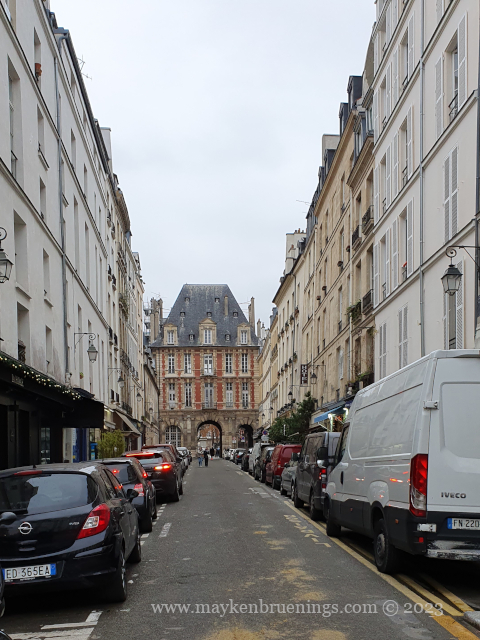
The square can be accessed via the rue de Birague on the south side, which connects the Place des Vosges to the rue Saint Antoine, the rue des Francs Bourgeois from the Marais on the northwest corner, the rue du Pas de la Mule at the northeast corner from the boulevard Beaumarchais, and through a door in the southwest corner leading into the gardens of the Hôtel de Sully.
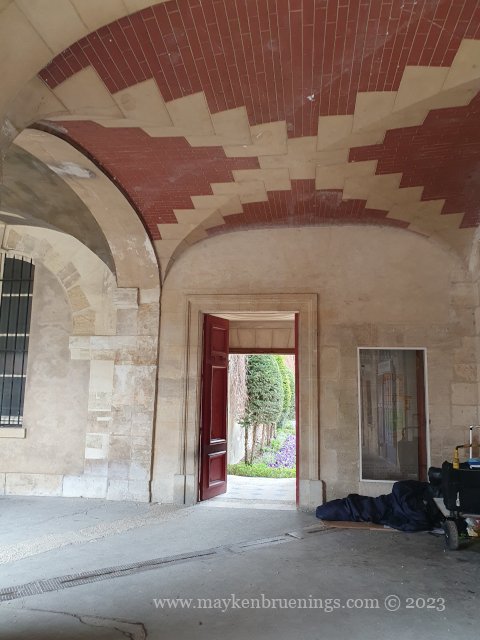
If you leave the Place des Vosges this way, you can cross the courtyard of the Hôtel de Sully and emerge onto the busy rue Saint Antoine which a little further becomes the rue de Rivoli, a main east-west axis of the city.
